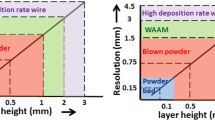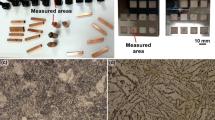Abstract
Sheet metal parts often have to be connected by fasteners. Within conventional process chains for the production of sheet metal parts, fasteners like bolts are mostly welded individually after the forming process and outside the working tool. This spatial separation of production steps requires complex handling operations and has negative impact upon the positioning accuracy of the fasteners. Every executable manufacturing step inside the sheet metal working tool shortens the process chain significantly. Furthermore, using a combined process the precision of position and orientation of fasteners improves. The challenges of integrating the welding process into the sheet metal working tool are some appropriate feeding technique, handling the emissions and associated pollutions of the tool as well as creating a dependable monitoring-system for the welding-process. Within the scope of a research project, a reliable technology for the integration of capacitor discharge (CD) stud welding with tip ignition was developed and tested. It complements existing solutions for integrated resistance welding processes. Due to its high-speed capability, low insertion of energy and only needed one-sided accessibility, this technique is particularly suitable for the integration in sheet metal working tools. A newly developed exhaustion-system is installed and tested for the first time by the CD arc stud welding process. The new technology produced top quality welding results along with high process stability and robustness in long-term tests.













Similar content being viewed by others
Abbreviations
- AiF:
-
German Federation of Industrial Research Associations “Otto von Guericke”
- CD:
-
Capacitor discharge
- EFB:
-
European Research Association for Sheet Metal Working
- IPH:
-
Institute of Integrated Production Hannover
- PLC:
-
Programmable logic controller
- SLV:
-
German Welding Institute SLV Munich
References
Neubauer H (2003) Integration von Schweißvorgängen im Folgeverbundwerkzeug. Forschungsbericht Nr. 167, Verbundinitiative Automobil NRW (VIA), Lüdenscheid
Ultra Tool and Manufacturing Inc. (2009) Advanced Manufacturing Practices: In-Die Welding. http://www.ultratoolmfg.com. Accessed 14 Feb 2009
Ocon Automated Systems S.L. (2009) In Die Welding Works. http://www.ocon-ik.com/eng_home.htm. Accessed 15 April 2009
Lau P, Gruß D (2008) Bolzenschweißen im Folgeverbundwerkzeug. Blech Rohre Profile (vol 3). Meisenbach Verlag, p 12
Tillmich R, Welz W (1997) Bolzenschweißen—Grundlagen und Anwendung. DVS-Verlag, Düsseldorf
Lauenroth T (2002) Prozessanalyse zum Kondensatorenentladungs-Bolzenschweißen mit Spitzenzündung. Dissertation, TU Clausthal
Stache K (1998) Prozessanalyse und Maßnahmen zur Qualitätssicherung beim Bolzenschweißen mit Spitzenzündung. Dissertation TU Clausthal
DIN EN ISO 13918:2008–2010 (2008) Schweißen—Bolzen und Keramikringe für das Lichtbogenbolzenschweißen. Beuth Verlag, Berlin
DIN EN ISO 14555:2006–2012 (2006) Schweißen—Lichtbogenschweißen von metallischen Werkstoffen. Beuth Verlag, Berlin
Schmitt KG (1983) Untersuchungen zur Prozeßanalyse und prozeßbegleitenden Qualitätskontrolle beim Bolzenschweißen mit Spitzenzündung. Dissertation, Universität-Gesamthochschule-Paderborn
Gödde J (2009) Qualitätsüberwachung beim Bolzenschweißen mit STUD-DI. http://www.schweissqualitaet.de. Accessed 31 May 2009
Nickel R, Gruß D, Zech F, Cramer H (2009) Integration und Überwachung des Schweißens von Normteilen in Blech-Verbundwerkzeuge. EFB-Research report no. 300, Europäische Forschungsgesellschaft für Blechverarbeitung e.V., Hannover
Gruß D, Kache H, Nickel R, Behrens BA, Jenicek A, Cramer H (2010) Integration of stud welding in sheet metal working tools. Weld Cut 9(5):313–318
Gruß D, Nickel R, Behrens BA (2010) Integration and control of arc stud welding in sheet metal tools. In: Steel research international, proceedings of the 13th international conference on metal forming 2010 81(9):1152–1155
Acknowledgments
The documented deliverables are developed in the research project Integration and control of welding of standard parts in metal-composite tools (AiF-Nr. 14.938 N). This project has been funded by the German Federation of Industrial Research Associations “Otto von Guericke” e.V. (AiF) and has been supervised by the European Research Association for Sheet Metal Working e.V. (EFB) with financial resources of the Federal Ministry of Economics and Technology (BMWi) for the period of June 2007 to May 2009. The final documentation is published as EFB research report no. 300. The authors thank all funders and partners.
Author information
Authors and Affiliations
Corresponding author
Rights and permissions
About this article
Cite this article
Behrens, BA., Gruß, D. & Jenicek, A. Stud welding within sheet metal working tools. Prod. Eng. Res. Devel. 5, 283–292 (2011). https://doi.org/10.1007/s11740-011-0304-3
Received:
Accepted:
Published:
Issue Date:
DOI: https://doi.org/10.1007/s11740-011-0304-3




